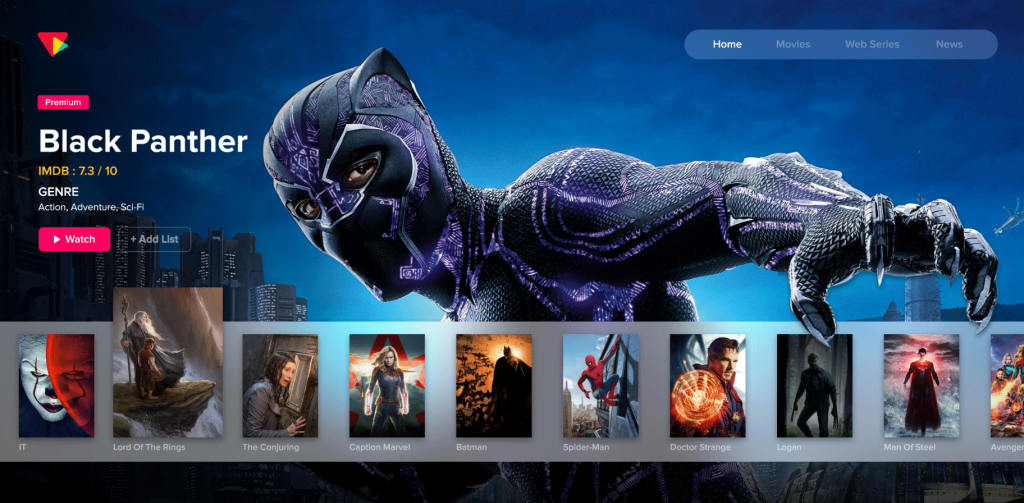Apollo Group Tv Fundamentals Explained
Apollo Group Tv Fundamentals Explained
Blog Article
Apollo Group Tv Can Be Fun For Anyone
Table of ContentsThe Definitive Guide for Apollo Group TvGetting The Apollo Group Tv To WorkSome Known Details About Apollo Group Tv Not known Facts About Apollo Group Tv
In this situation, as opposed to having three-minute commercial areas during a 30-minute tv program, TV programming may change to one where a customer will be called for to have a month-to-month subscription, to ensure that they cen sight targeted banner ads. This kind of marketing currently occurs on the internet, and the amount of information television firms gather permits them to do much the same.Describe the major fads among the broadcasting and cord networks. Popular radio shows such as cops dramatization Dragnet and western cowboy collection Gunsmoke were adapted for television, and brand-new Television shows were funded by solitary marketers, just as radio programs had actually been.
Today, the television industry is much more complicated. Programs are sponsored by numerous marketers; programming is managed by major media empires; and the three major networks no longer control the airwaves yet instead share their customers with many cable television channels. Numerous aspects make up these trends within the sector, consisting of technological developments, government regulations, and the development of new networks.

Our Apollo Group Tv Statements
Established in 1969, (PBS) developed out of a record by the Carnegie Compensation on Educational Television, which took a look at the role of instructional, noncommercial tv on society. Public television was also planned to offer global accessibility to television for viewers in rural locations or customers who could not afford to pay for private tv services.
The period in between 1950 and 1970 is traditionally identified as the. Other than a tiny part of airtime controlled by public television, the three significant networks (understood as the Big Three) controlled the tv industry, jointly accounting for greater than 95 percent of prime-time watching. In 1986, Rupert Murdoch, the head of international company News Corp, released the Fox network, testing the supremacy of the Big Home Page 3.
Targeting young and minority target markets with programs such as Buffy the Vampire Slayer, Moesha, Dawson's Creek, and The Wayans Bros., the new networks really hoped to attract stations far from their old network affiliations. However, as opposed to duplicating the success of Fox, UPN and WB battled to make an influence. Not able to draw in numerous associate terminals, the 2 fledgling networks got to fewer homes than their larger opponents because they were unobtainable in some smaller cities.
This choice led the means for the advancement of cable television flick channels, contributing to the rapid growth of cord in the 1980s and 1990s. apollo group tv. Additional deregulation of cord in the 1984 Cable Television Communications Plan Act removed constraints on cable television rates, allowing operators to bill what they wanted for cable television services as long as there worked competitors to the service (a standard that over 90 percent of all wire markets might fulfill)
Fascination About Apollo Group Tv

Having produced the first "superstation," Turner broadened his world by founding 24-hour news network CNN in 1980. At the end of the year, 28 nationwide programming solutions were available, and the cord change had begun. Over the following decade, the sector went through a period of quick growth and appeal, and by 1994 customers can select from 94 standard and 20 premium wire solutions.
Figure 9 - http://tupalo.com/en/users/7656312.16 Raised competition from cable television networks has actually triggered a stable decrease in the networks' audience ratings. During the 1950s, the price of creating a single television program raised as shows became longer and manufacturing prices soared. Sponsorship on network television moved from single sponsorship, in which a program was entirely supported and created by one marketer, to multiple sponsorship, in which marketers bought 1- or 2-minute spots on the program
Pick one of the Big 4 networks and publish out its regular shows schedule. See the network's prime-time programs over the program of a week, noting the target market for each program.
Apollo Group Tv - The Facts

Linear TV, frequently referred to as standard broadcast TV, includes cable and satellite tv., assume of it as the traditional way of seeing Television that has been around for decades.
Report this page